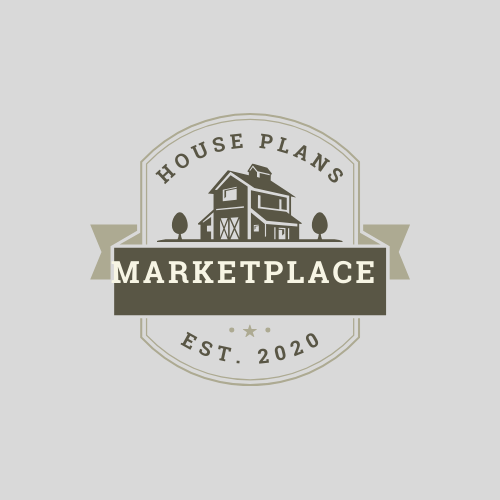When you think of a barn, you might picture a rustic structure used for storing hay or housing livestock. But did you know that barns can also be converted into charming and spacious homes? With their wide open interiors and potential for unique architectural details, barn to house conversion plans have become increasingly popular among homeowners looking for a one-of-a-kind living space.
A barn to house conversion offers the perfect blend of history and modern living. By repurposing an existing structure, homeowners can preserve the character and charm of the barn while transforming it into a comfortable and functional home. According to a recent survey, barn conversions have seen a significant rise in demand, with a 30% increase in the past decade. With their high ceilings, exposed beams, and large windows, barns provide unique design opportunities that can result in stunning living spaces.
Transform your barn into a beautiful, functional home with our expert conversion plans. Our professional team will guide you through the process, from initial design to final construction. Create a seamless transition from barn to house while preserving the unique character and charm of the original structure. Our plans include detailed floor layouts, electrical and plumbing specifications, and architectural drawings, ensuring a smooth and successful conversion. Trust our expertise to turn your old barn into the home of your dreams.

The Benefits of Converting a Barn into a House
Converting a barn into a house offers a unique opportunity to create a truly one-of-a-kind living space. Barns are often rich in history and charm, and repurposing them as homes allows you to preserve their character while enjoying modern comforts. There are several benefits to consider when exploring barn to house conversion plans:
- Cost-effectiveness
- Sustainability
- Spaciousness
- Flexibility in design
Cost-effectiveness
One of the main advantages of converting a barn into a house is its cost-effectiveness compared to building a new home from scratch. The structure of the barn is already in place, saving you the expenses associated with constructing the main framework. In addition, barns often have large, open floor plans, which reduces the need for extensive remodeling. This can significantly lower the overall cost of the project.
Furthermore, converting a barn into a house allows you to repurpose existing materials. You can salvage and reuse components of the barn, such as wood beams, doors, and windows, adding character to your new home while reducing waste. This sustainable approach not only benefits the environment but also contributes to cost savings.
Keep in mind that while the initial conversion costs may be lower, it is essential to consider the necessary updates and renovations required to meet building codes and ensure the safety and comfort of the inhabitants. Factor these costs into your budget to maintain a realistic perspective of the overall investment.
Sustainability
Converting a barn into a house aligns with sustainable living practices. By repurposing an existing structure, you avoid the environmental impact associated with new construction materials and the energy required to extract and transport them. Barns are often built with durable materials, such as hardwood, which adds to the longevity and sustainability of the converted home.
Additionally, the spacious design of barns allows for excellent natural lighting and ventilation, reducing the need for artificial lighting and air conditioning during the day. With the right insulation and energy-efficient upgrades, a converted barn can achieve high levels of energy efficiency, further reducing its carbon footprint.
Moreover, converting a barn into a home promotes adaptive reuse, which is an essential principle of sustainable architecture. It maximizes the lifespan of existing structures and minimizes waste, making it an environmentally responsible choice.
Spaciousness
Barns are renowned for their spacious interiors, offering ample room for creative and flexible design possibilities. The high ceilings, open floor plans, and expansive square footage of a barn provide the opportunity to create spacious living areas, large bedrooms, and even home office or recreational spaces.
The wide-open spaces in barns present an ideal canvas for various architectural styles, whether you prefer a rustic farmhouse aesthetic or a modern minimalist approach. You can take advantage of the existing structural elements, such as exposed wooden beams and vaulted ceilings, to create unique design features and focal points.
Furthermore, the generous square footage of a barn allows for future expansion or the inclusion of additional rooms or features. This flexibility is a distinct advantage, especially if your needs or family size changes over time.
Flexibility in Design
When converting a barn into a house, you have the freedom to customize the design to suit your preferences and lifestyle. Unlike building from scratch, where you start with a blank slate, barn conversions offer a unique blend of existing character and new design elements.
The layout and structure of the barn may already dictate the location of certain rooms, such as bedrooms on a second floor or a central living area on the ground level. However, within these constraints, there is ample room for creativity. You can choose the placement and layout of the kitchen, bathrooms, and additional living spaces to create a functional and personalized home.
Consider incorporating elements that complement the barn’s architectural style, such as reclaimed wood accents, sliding barn doors, or exposed brickwork. This merging of old and new creates a unique aesthetic appeal.
In conclusion, converting a barn into a house provides an array of benefits, including cost-effectiveness, sustainability, spaciousness, and design flexibility. It allows you to create a home that combines the charm and history of the barn with the comforts and modern amenities of a contemporary house. By repurposing a barn, you not only preserve its unique character but also contribute to sustainable living practices. So, if you’re looking for a distinctive home with character and ample room for creativity, a barn to house conversion may be the perfect choice for you.
Barn to House Conversion Plans
Converting a barn into a house can be an exciting project that combines the charm of a rustic structure with the comforts of a modern home. It offers a unique opportunity to create a cozy and welcoming living space with character and history. However, careful planning and preparation are essential to ensure a successful barn conversion.
Before embarking on a barn to house conversion, it is important to consider various factors such as budget, architectural design, permits, and structural modifications. Hiring a reputable architect and contractor with experience in barn conversions is highly recommended to guide you through the process and ensure compliance with building regulations.
The conversion process typically involves restoring the barn’s exterior while transforming the interior into functional living spaces. This may include adding insulation, installing plumbing and electrical systems, and designing the layout to maximize the available space. The design should also consider natural light sources, ventilation, and maintaining the barn’s unique features.
Ultimately, barn to house conversion plans should prioritize preserving the historical integrity of the structure while creating a comfortable and livable home. It is essential to consult with professionals and carefully evaluate each step to ensure a successful and rewarding transformation.
Key Takeaways
- Consider the layout and design elements when converting a barn into a house.
- Ensure proper insulation and ventilation to maintain a comfortable living environment.
- Plan for sufficient natural light by incorporating windows and skylights.
- Address any structural issues and reinforce the barn’s foundation if needed.
- Design functional spaces that suit your needs, such as bedrooms, bathrooms, and a kitchen.
Frequently Asked Questions
In this section, we answer some common questions about barn to house conversion plans. If you are considering converting a barn into a house, this information will be helpful for you.
1. What are the key factors to consider before converting a barn into a house?
Before embarking on a barn to house conversion project, it’s important to consider several key factors:
Firstly, evaluate the structural integrity and condition of the barn. Ensure that it is capable of supporting the necessary modifications and meets safety standards.
Secondly, consult with local building authorities and obtain the necessary permits and approvals for the conversion project. This will ensure compliance with building codes and regulations.
2. What steps are involved in converting a barn into a house?
The process of converting a barn into a house typically involves the following steps:
1. Assessing the structural integrity and condition of the barn.
2. Developing a detailed conversion plan, including layout, insulation, plumbing, and electrical systems.
3. Obtaining the necessary permits and approvals from local authorities.
4. Implementing any necessary structural modifications, such as reinforcing the foundation or adding load-bearing walls.
5. Installing insulation, plumbing, electrical systems, and other necessary infrastructure.
6. Constructing interior walls, floors, and ceilings to create the desired living spaces.
7. Finishing touches, including painting, flooring, and interior design.
3. How long does it typically take to convert a barn into a house?
The duration of a barn to house conversion project can vary depending on various factors, including the size and complexity of the barn, the desired level of finishes, and the availability of skilled labor. On average, a conversion project may take anywhere from several months to a year to complete.
4. What are the cost implications of converting a barn into a house?
The cost of converting a barn into a house can vary significantly based on factors such as the size of the barn, the extent of structural modifications required, the level of finishes, and the region where the project is located. It is recommended to consult with a professional contractor or architect to obtain accurate cost estimates specific to your project.
5. Are there any specific building codes or regulations to consider when converting a barn into a house?
Yes, when converting a barn into a house, it is important to consider and comply with applicable building codes and regulations. These may include requirements for structural stability, fire safety, insulation, electrical systems, plumbing, and more. It is advisable to consult with local building authorities or engage the services of a professional architect or designer who is familiar with the code requirements in your area.
You’ve Never Seen a Barn Conversion Like This Before
To conclude, converting a barn into a house can offer a unique and charming living space. With proper planning and execution, it is possible to transform the rustic barn into a comfortable and functional home. Careful consideration must be given to structural modifications, insulation, plumbing, and electrical systems to ensure a safe and efficient conversion. Additionally, incorporating elements of the barn’s original design and character can add a touch of uniqueness to the house. Overall, a barn to house conversion can be a rewarding project for those seeking a one-of-a-kind living space.
However, it is important to note that converting a barn into a house requires careful planning, adherence to building codes and regulations, and proper budgeting. The process may also involve hiring skilled professionals such as architects, engineers, and contractors. It is recommended to thoroughly research and consult with experts before embarking on a barn conversion project. With the right approach and resources, a barn to house conversion can turn an old and unused structure into a beautiful and functional home.

